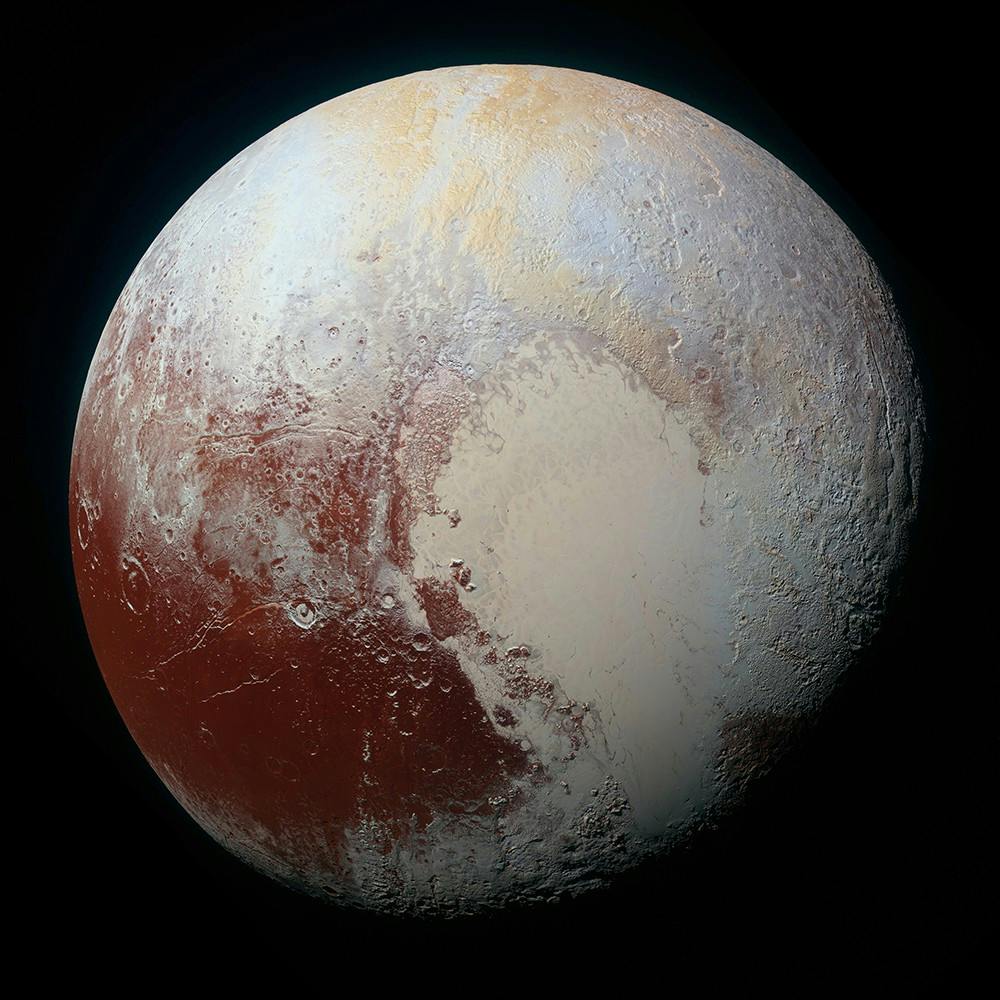In last Thursday’s “Rediscovering Pluto” panel, Alice Bowman, the Mission Operation Manager, or MOM, and Anne Verbiscer, a University planetary geologist and associate research professor of astronomy, discussed the revolutionary New Horizons Mission to Pluto. The mission completed the first ever flyby of Pluto this past July, which received the first clear image of Pluto.
The National Academy of Science was awarded top priority to the exploration of the Kuiper Belt, Pluto, for further solar system exploration in the early 2000s. The New Horizons
team accepted the challenge, hoping to understand how Pluto and its largest moon, Charon, relate to other objects in the solar system.
The New Horizons spacecraft, an interplanetary space probe, was first launched on Jan. 19, 2006. After flying by Jupiter for a gravity boost in 2007, the spacecraft’s closest encounter with Pluto finally occurred on July 14, 2015.
Funded by NASA, the New Horizons team was stationed at the Johns Hopkins University Applied Physics Laboratory in Laurel, Md. As Bowman noted in the presentation,
there was a litany of reasons the “King of the Kuiper Belt” had yet to be explored prior to launch in 2006.
Specifically, Bowman noted the technical challenges of time, power and distance, given that the encounter was planned to occur at 32 astronomical units (au) from earth. One au equals the average distance between the earth and sun. So, the spacecraft was designed with utmost durability, so that it would be able to survive the time in space.
“I think the most challenging objective of all was that this was a flyby mission,” Bowman said. “So, you only get one chance to do it. You can’t go back and do it again.”
The New Horizons spacecraft was approximately the size of a baby grand piano, housing seven scientific instruments in order to study the atmospheres, surfaces and environments of Pluto and its moons. Three complexes around the world, approximately 120 degrees apart, were employed to communicate with the spacecraft, accommodating the earth’s rotation.
Unexpectedly, however, after flying for almost nine years without major complications, on July 4, the operations board at APL lost contact with the spacecraft. The team initially believed there was an issue with the ground system, such that the signal could not be received on Earth.
However, the ground system was discovered to be fully functioning. With only three days remaining before the critical nine day sequence in which the spacecraft would be closest to Pluto, the team rushed to identify the problem.
“So you allow yourself those 10s of seconds to feel that pit in your stomach and panic, and then you have to get on with it,” Bowman said. “You have a team to lead and a spacecraft to recover, and you’re not going to miss this one time opportunity.”
Finally, a probable cause was identified, and the station reconfigured for the faulty signal. After
three days, the spacecraft was fully recovered. With only four hours to spare, the team was ready for New Horizons’ closest encounter with Pluto.
The New Horizons mission produced the first high resolution photographs of Pluto’s surface and atmosphere. Verbiscer was one of the first to analyze the photos, and she suggests that the data reveals remarkable geologic features including ice volcanoes, nitrogen ice glaciers and a stunning hazy atmosphere.
According to the images, Pluto’s surface is primarily covered by methane and nitrogen ice. Despite Pluto’s remote location away from the sun, as Verbiscer noted, methane and nitrogen ice are not strong enough to create variation in topography, which means water ice must be present.
“This has been exploration at its absolute purest,” Verbiscer said.
Pending approval from NASA, New Horizons hopes next to delve deeper into the Kuiper Belt, and the extended mission proposal is to be submitted next month.







